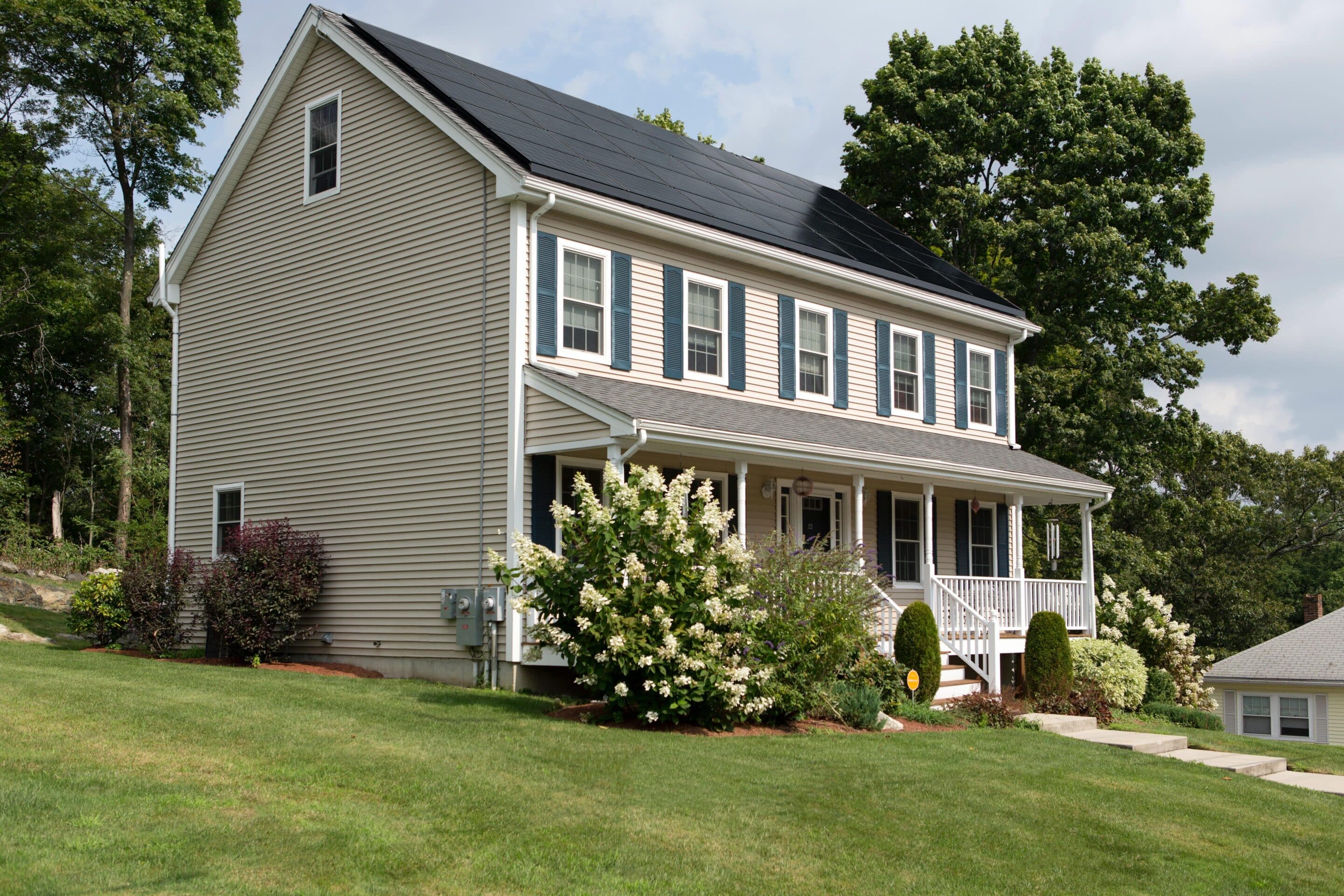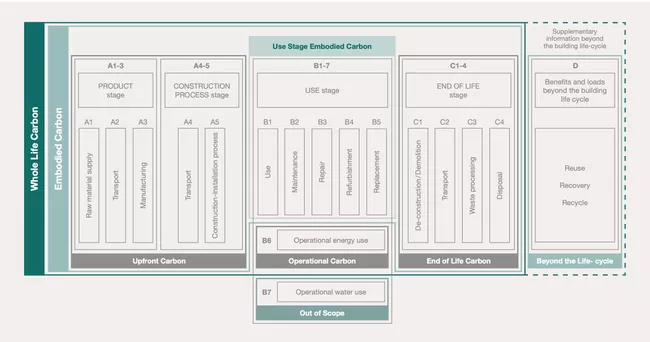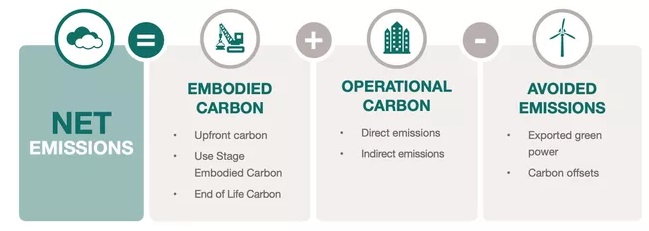
A net-zero home may be the way to go if you’re on the hunt for a more efficient, comfortable, and sustainable place to live. It’s on track to be the way of the future, with the implementation of the BC Energy Step Code which puts BC on a path to meet the province’s target that all new buildings must be “net-zero energy ready” by 2032.
There has, however, been a lot of discussion about “Net-zero” and what it actually means. We are big fans of building for the future, so we thought we’d clarify the term.
The Life Cycle stages of a building
Buildings interfere with the environment throughout their whole life cycle. Constructing a building, using it for many years, and finally knocking it down will have an impact on the environment.
To get the full picture, the full life cycle of the building must be considered.

Source: CaGBC
There are four life cycle stages.
The product stage (A1-A3)
The product stage (A1-A3) – extracting, producing materials, and transporting the materials (along with workers and vehicles) anywhere between the extraction point and the construction site.
The construction stage (A4-A5)
The construction stage (A4-A5) – transporting the materials, the energy to power the construction equipment, supporting construction materials, and disposing of any waste.
The use stage (B1-B8)
The use stage (B1-B8) – operational energy used to occupy a building over its lifetime (electricity, heating, etc.), maintenance, repairs, and replacement of materials.
The end-of-life stage (C1-C4)
The end-of-life stage (C1-C4) – demolition and recycling or disposal of materials.
The D stage is considered beyond the building life cycle, so we won’t be discussing it here.
Net-zero Energy also called Net-zero Operational Emissions
A net-zero energy building, is a building with net-zero energy consumption (B6 stage), meaning the total amount of energy used by the building on an annual basis is equal to the amount of renewable energy created on the site. We’ve seen a few projects reach net-zero energy with the installation of solar panels. They will import power from the grid in winter due to high heating loads and less on-site generation but will export excess power to the grid in summer thanks to lower energy demand and higher generation capabilities.
Although the net-zero concept applies to a wide range of resources, water, and waste, energy is usually the first resource to be targeted because:
Energy is expensive and has a high carbon footprint. Hence reducing energy use can save the building owner money and is a major way to reduce the building’s carbon footprint.
There are well-established means to significantly reduce the energy use and carbon footprint of buildings. These include: adding insulation, using heat pumps instead of furnaces, using low emissivity, triple-glazed windows, and adding solar panels to the roof.
All of those strategies are being implemented in BC, thanks to the BC Energy Step Code.
Net-zero Embodied Emissions or Embodied Carbon
Embodied Emissions also called Embodied Carbon are the emissions released from the extraction, manufacturing, transportation, installation, and decommissioning of building materials (A1-C6).
Strategies to reduce embodied emissions include reducing the amount of materials needed, the use and re-use of bio-based materials, low-carbon manufacturing processes, and low-carbon transportation.
This is a complex topic as we know some materials can store carbon and be “carbon-negative”.
Embodied Emissions are calculated using a Life Cycle Assessment, which is the most widely used and highly regarded tool for quantifying the environmental impacts of products and services. We do what is called a whole-building LCA to quantify the environmental impacts of a building over its lifecycle.
In short, a net-zero embodied emissions building is a building where no emissions were emitted from the materials from the get-go, during its use, and when decommissioned (A1-C6 excluding B6).
Net-zero Carbon also called net-zero whole-life carbon
A net-zero carbon building is a net-zero energy building where no fossil fuels are used, all energy use (operational emissions) has been minimized, all energy use is generated on- or off-site using renewables, and emissions from building materials (embodied emissions) are minimized.
In essence, the total of all GHG emissions, both operational and embodied (A1-C6 including B6), over the building’s life cycle are minimized and with residual “offsets”, equals zero.
Reaching net-zero carbon is no small task, but it is the goal we must strive for if we want to keep global warming below 2 degrees. Until all emissions can be eliminated, high-quality carbon offsets can be used as a counterbalance. Carbon offsets should be used with caution as not all of them are created equal.

Source: CaGBC
Build Carbon Wise
In a changing climate, we need to build with resilience in mind. Increased frequency of extreme weather events, wildfires, and floods means that we need to use new strategies to build homes that have a low impact on the environment, are comfortable, and are durable.
Regardless of the terminology used, building a home that performs as well as it looks is a sound investment that will become more common practice in the coming years. It also means you are doing your part to protect the environment for future generations.
At Carbon Wise, we are the first consultants in BC to offer both Energy Efficiency services and Whole-building Life Cycle Assessments (LCAs), taking into account the synergies between the two. We pride ourselves on providing cost-effective and practical low-carbon strategies that will help you have the least possible impact. Really, we would love you to get to net-zero carbon!

